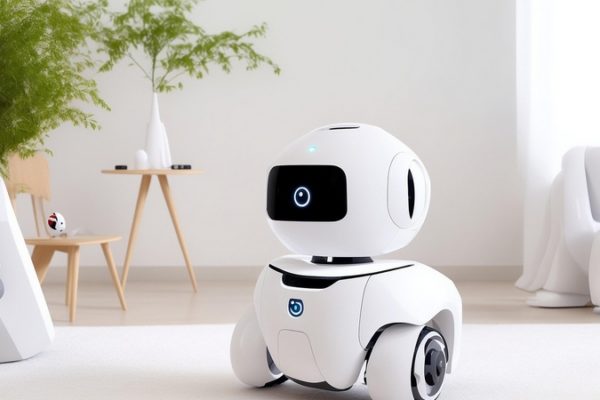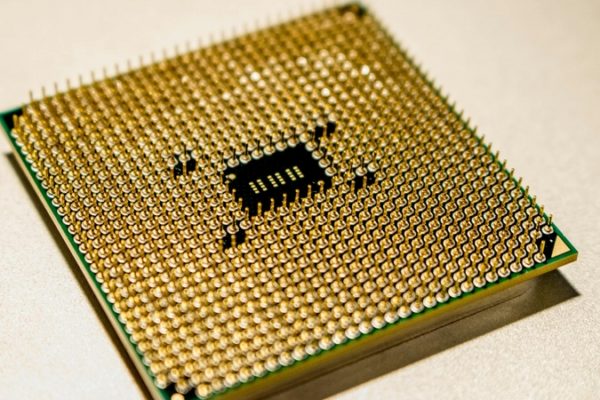
Kestra Medical Technologies, a trailblazer in wearable cardiac technology, has recently announced its intention to go public with a $100 million IPO. The company specializes in a comprehensive Cardiac Recovery System, highlighted by its ASSURE WCD, a next-generation wearable cardioverter defibrillator designed for patients at high risk of sudden cardiac arrest. With a significant adoption rate across numerous U.S. hospitals and a robust sales track record, Kestra is poised to make a significant impact on cardiac health management. What is the significance of Kestra’s wearable technology in cardiac care? How does their ASSURE WCD enhance patient safety and treatment outcomes? Looking forward, what implications might Kestra’s IPO and technological advancements have for the future of medical device innovation?
Top Stories This Week
- Wearable Cardiac Device Maker Kestra Medical Technologies Files For A $100 Million IPO
- Electricity Companies Back Startups That Can Squeeze More Power Through The Grid
- AI-powered Social Innovation To Build More Resilient Cities
- DeepSeek AI Banned From NY Government Devices And Networks
- NASA’s Radiation Tolerant Computer Lives Up To Its Name After Surviving Van Allen Belts
- Massive Online Data Breach Sees 2.7 Billion Records Leaked – Here’s What We Know
- Teen Innovator Develops AI-powered Wildfire Sensor To Detect Flames Before They Spread
- Wafer-Scale Computing For LLMs (U. Of Edinburgh, Microsoft)
- Paper Device Harvests Electricity From Water Movement To Power Wearable Electronics
- Open Source IoT: A Primer For Everyone
Hardware Business News
Electricity Companies Back Startups That Can Squeeze More Power Through The Grid

As the world grapples with the urgent need for sustainable energy solutions, energy companies are exploring innovative technologies to enhance grid efficiency and integrate more renewable energy sources. From deploying advanced sensor technologies to increase transmission line capacity to experimenting with superconductors that could revolutionize power delivery, the stakes are high in the race to decarbonize. But what challenges are these companies facing as they attempt to connect renewable energy projects to the grid? How are technologies like digital twins and AI being used to optimize grid performance and manage new energy inputs? And looking to the future, what breakthroughs might we expect to see that could fundamentally transform how our electricity systems operate?
AI-powered Social Innovation To Build More Resilient Cities

As cities continue to grow, the integration of AI technologies is becoming an essential part of developing sustainable urban environments. IBM’s recent initiative through its Sustainability Accelerator program highlights the innovative use of AI to address urban challenges. With projects ranging from enhancing food security to improving resilience against extreme weather, IBM is at the forefront of fostering technological advancements in urban settings. What are the key roles AI can play in urban development? How are organizations like IBM implementing these technologies to address city-specific challenges? And what future innovations might emerge from these AI-driven projects to further enhance urban resilience and sustainability?
DeepSeek AI Banned From NY Government Devices And Networks

In recent years, there have been growing concerns over foreign government influence in the West, with many countries, including the US, UK, and EU, introducing new regulations to protect against cyber threats. One area of particular concern is the use of artificial intelligence (AI) in government and private institutions, with some nations using AI to monitor and control their citizens. What are the concerns around foreign government influence and AI, how has the US responded to this threat, and how will future governments protect against AI-powered cyber threats?
Hardware Engineering News
NASA’s Radiation Tolerant Computer Lives Up To Its Name After Surviving Van Allen Belts

NASA’s recent venture into space with the RadPC aboard the Firefly Aerospace’s Blue Ghost mission marks a significant stride in developing radiation-tolerant technology crucial for future lunar and interplanetary explorations. As the RadPC successfully navigated the challenging radiation environment of the Van Allen belts, it not only demonstrated its resilience but also its potential to support long-term missions in harsh space conditions. What exactly is the RadPC, and how does it ensure reliability against space radiation? Why is radiation tolerance critical for computers in space exploration? And looking ahead, how might advancements in radiation-tolerant technology shape the future of human and robotic space missions?
Massive Online Data Breach Sees 2.7 Billion Records Leaked – Here’s What We Know

In a startling revelation, a Chinese IoT company, Mars Hydro, has suffered a significant data breach, exposing nearly 2.7 billion records, including sensitive WiFi and network device information. This breach highlights the potential vulnerabilities and risks associated with the storage and management of vast amounts of data. As the digital footprint of IoT devices expands, the implications for security and privacy become increasingly critical. What does this massive data breach reveal about the security of IoT devices? How can users and companies mitigate the risks of such breaches? And what does the future hold for IoT security in light of these growing threats?
Teen Innovator Develops AI-powered Wildfire Sensor To Detect Flames Before They Spread

In the wake of California’s devastating wildfires, a young innovator from Orange County, Ryan Honary, has developed a potentially groundbreaking AI-powered sensor designed to detect wildfires at their earliest stages. This high school junior, inspired by the catastrophic 2018 Camp Fire, has crafted a technology that integrates infrared sensors with artificial intelligence to provide early warnings to emergency responders. As Honary deploys his sensor for the first time, many are watching closely to see its impact on wildfire management. What exactly is this new AI-powered wildfire sensor, how does it promise to enhance fire detection and response, and what could this mean for the future of wildfire prevention across the nation?
Hardware R&D News
Wafer-Scale Computing For LLMs (U. Of Edinburgh, Microsoft)

In a groundbreaking collaboration, the University of Edinburgh and Microsoft Research have unveiled a technical paper on “WaferLLM: A Wafer-Scale LLM Inference System.” This innovative approach utilizes wafer-scale manufacturing technologies to enhance AI accelerators, integrating an unprecedented number of AI cores and memory bandwidth. By introducing novel hardware models and optimization techniques, this system seeks to dramatically improve the efficiency and speed of large language models (LLMs). What are the implications of wafer-scale computing for AI development? How does WaferLLM enhance the capabilities of LLMs compared to traditional systems? And what could the future hold for AI as this technology evolves?
Paper Device Harvests Electricity From Water Movement To Power Wearable Electronics

Researchers at Northwestern Polytechnical University have made a groundbreaking advancement in the field of wearable technology by developing a flexible, paper-based device that generates electricity from water movement. This innovation leverages the natural water-absorbing properties of paper combined with a unique kirigami cutting technique, allowing the device to stretch significantly while generating power. Published in Advanced Functional Materials, this new generator could revolutionize how wearable devices are powered, particularly in health monitoring and environmental sensing. How does this paper-based device harness water to generate electricity? What are the implications of this technology for wearable electronics? Looking ahead, how might this technology evolve to meet the growing demands of more power-intensive applications?
Open-Source Hardware News
Open Source IoT: A Primer For Everyone

Open source IoT is revolutionizing the way we interact with technology, offering unprecedented customization and accessibility. This technology is not only enhancing the functionality of everyday objects but also fostering innovation across various sectors by allowing developers to modify and share their advancements freely. From transforming homes into intelligent environments to supporting sustainable practices in agriculture and healthcare, open source IoT is making technology inclusive and affordable. But what exactly is open source IoT, and how does it differ from proprietary solutions? How are startups and industries leveraging this technology to address local and global challenges? And what future developments can we anticipate as this technology evolves and becomes more integrated into our daily lives?


